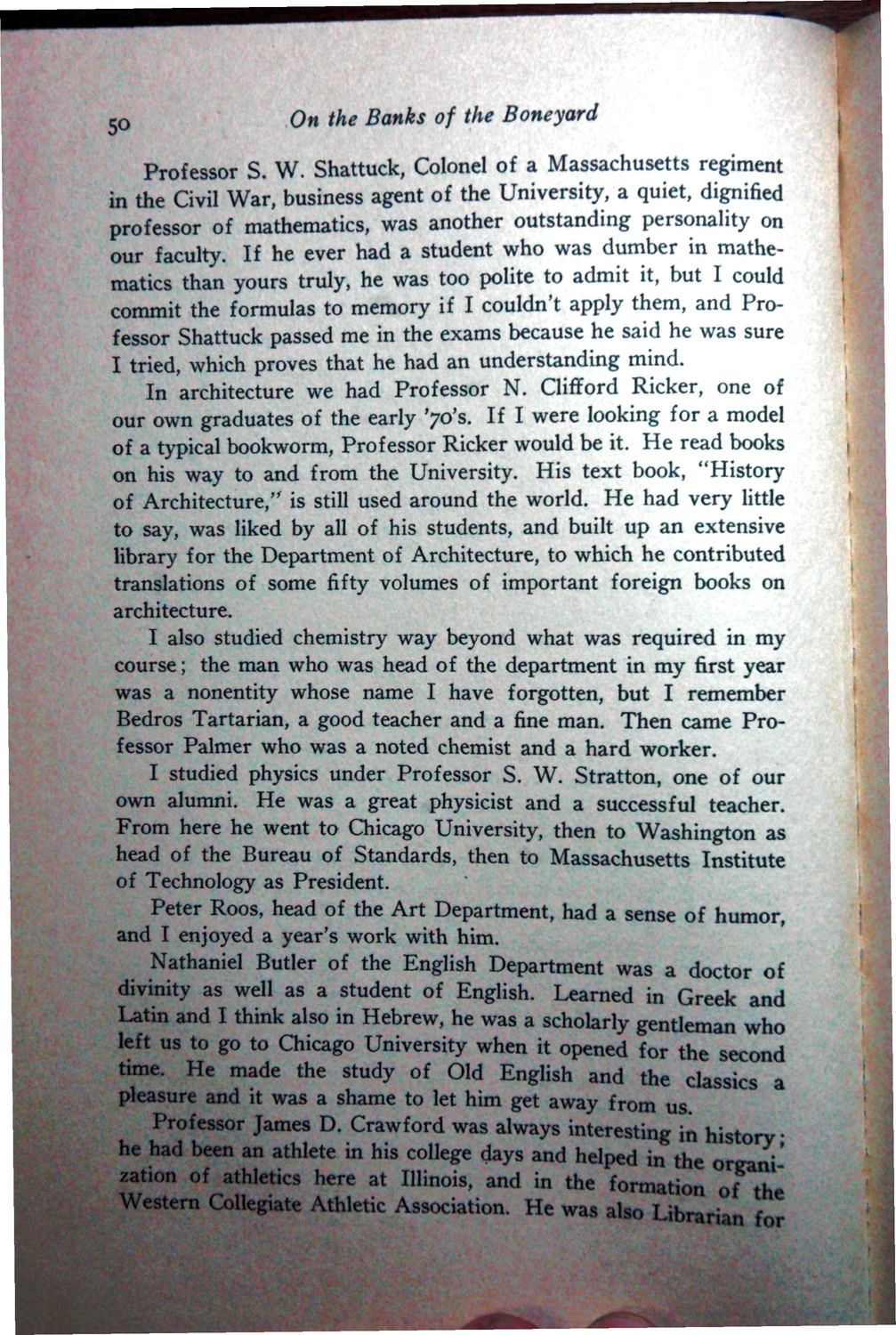| |
| |
Caption: Book - Banks of the Boneyard (Charles Kiler)
This is a reduced-resolution page image for fast online browsing.

EXTRACTED TEXT FROM PAGE:
5o On the Banks of the Boneyard Professor S. W. Shattuck, Colonel of a Massachusetts regiment in the Civil War, business agent of the University, a quiet, dignified professor of mathematics, was another outstanding personality on our faculty. If he ever had a student who was dumber in mathematics than yours truly, he was too polite to admit it, but I could commit the formulas to memory if I couldn't apply them, and Professor Shattuck passed me in the exams because he said he was sure I tried, which proves that he had an understanding mind. In architecture we had Professor N. Clifford Ricker, one of our own graduates of the early '70's. If I were looking for a model of a typical bookworm, Professor Ricker would be it. He read books on his way to and from the University. His text book, "History of Architecture," is still used around the world. He had very little to say, was liked by all of his students, and built up an extensive library for the Department of Architecture, to which he contributed translations of some fifty volumes of important foreign books on architecture. I also studied chemistry way beyond what was required in my course; the man who was head of the department in my first year was a nonentity whose name I have forgotten, but I remember Bedros Tartarian, a good teacher and a fine man. Then came Professor Palmer who was a noted chemist and a hard worker. I studied physics under Professor S. W. Stratton, one of our own alumni. He was a great physicist and a successful teacher. From here he went to Chicago University, then to Washington as head of the Bureau of Standards, then to Massachusetts Institute of Technology as President. Peter Roos, head of the Art Department, had a sense of humor, and I enjoyed a year's work with him. Nathaniel Butler of the English Department was a doctor of divinity as well as a student of English. Learned in Greek and Latin and I think also in Hebrew, he was a scholarly gentleman who left us to go to Chicago University when it opened for the second time. He made the study of Old English and the classics a pleasure and it was a shame to let him get away from us. Professor James D. Crawford was always interesting in history • he had been an athlete in his college days and helped in the ortrani' zation of athletics here at Illinois, and in the formation of the Western Collegiate Athletic Association. He was also Librari m for I
| |